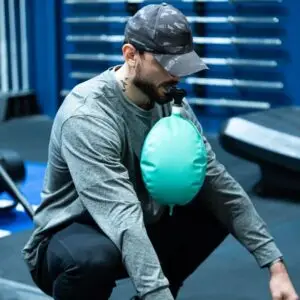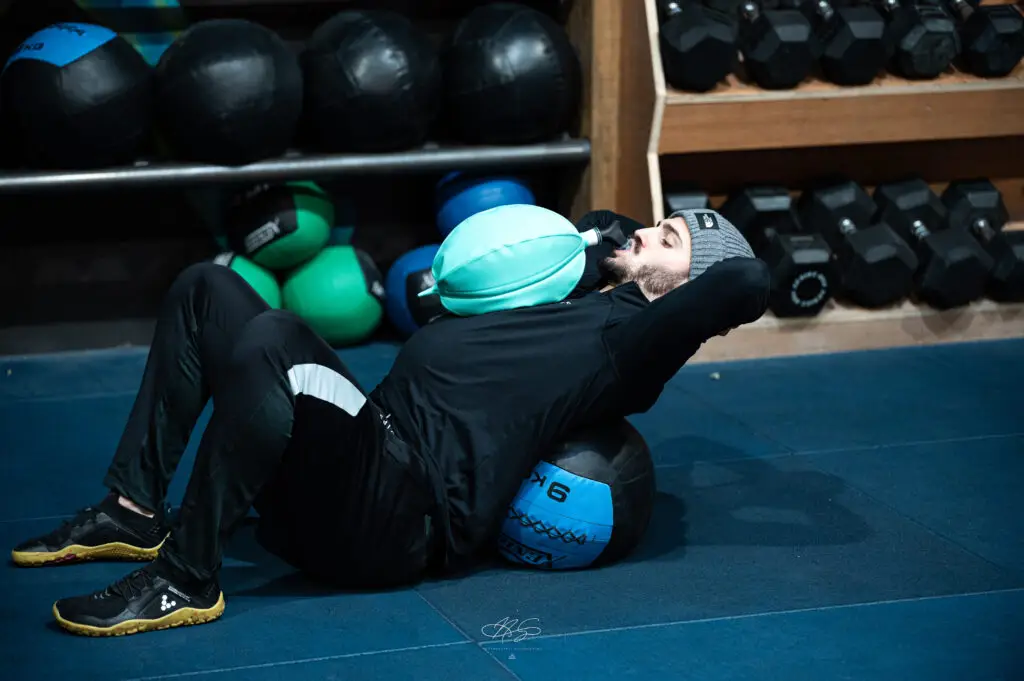
Every athlete knows the feeling of burning lungs when pushing to the limit. That breathless sensation isn’t just discomfort – it’s a performance ceiling. Lung capacity can be the secret ingredient that separates a personal best from an average performance. To go faster or last longer, you don’t just need stronger legs or a bigger heart; you need a bigger engine for your breath. Maintaining an active lifestyle through regular physical activity can significantly enhance lung capacity and overall health. In this post, we’ll explore why lung capacity matters so much for athletic performance, why traditional breathing training tools often fall short, and how a cutting-edge isocapnic respiratory trainer could be the game-changing solution to help you breathe stronger, perform longer, and recover faster.
Introduction to Respiratory Health

Respiratory health is a cornerstone of overall well-being, playing a crucial role in how our bodies function daily. The lungs are responsible for oxygenating the blood, removing carbon dioxide, and ensuring that every cell in the body gets the air it needs to thrive.
To maintain healthy lungs, it’s essential to practice diaphragmatic breathing, also known as belly breathing. This technique helps improve lung function by encouraging deeper, more efficient breaths. By focusing on these practices, you can increase your lung capacity, enhance your respiratory health, and ensure that your body gets the oxygen it needs to perform at its best.
Why Lung Capacity Matters for Athletes

Oxygen is fuel for your muscles, and your lungs are the pump that delivers it. Respiratory fitness directly influences your energy levels and resistance to fatigue – if your breathing system tires out early, your overall performance will suffer. In endurance sports or high-intensity competition, it’s often your lungs that give out before your limbs do. An athlete who can take in more air (and use it efficiently) can maintain speed and power while others are forced to slow down. In short, better breathing can mean the difference between hitting the wall and breaking through it. This is why increasing lung capacity and strengthening your abdominal muscles is so critical for anyone aiming for peak athletic performance.
Incorporating aerobic exercise into your training routine can improve heart function and strengthen muscles, thereby enhancing lung efficiency.
The Challenge with Traditional Breathing Training
Many athletes turn to tools like elevation masks or simple respiratory trainers in hopes of boosting lung capacity. The idea is straightforward: make breathing harder during training so your lungs adapt. However, traditional training masks only restrict airflow and don’t maintain proper oxygen and carbon dioxide levels. This can lead to dizziness, hyperventilation, and sub-par results – your lungs might be working harder, but not smarter. In fact, just limiting air intake can throw off the balance of O₂ and CO₂ in your blood, causing you to gasp without truly strengthening the right muscles.
Proper breathing techniques, such as diaphragmatic breathing, are essential for effectively training the respiratory muscles and improving lung capacity.
Even outside of gadgets, it’s hard to specifically target your respiratory system. You can do all the running or cycling you want, but you might still be limited by the way you breathe. Luke Way, a veteran endurance coach and founder of Isocapnic, noticed that most athletes hit a performance ceiling because their breathing isn’t trained efficiently. He searched for a device to isolate and train the respiratory muscles – and when he found none that met the need, he helped invent one. This innovation, born from the shortcomings of traditional methods, is changing how athletes train their lungs.
Air Hunger and Endurance Performance
What Is Isocapnic Training and Why It’s Different
“Isocapnic” might sound technical, but the concept is simple and powerful. Isocapnic respiratory training means exercising your breathing muscles while keeping carbon dioxide levels in control. In other words, unlike those old-school masks, an isocapnic trainer doesn’t just cut down your air and hope for the best – it actively manages your breathing mixture so you can train hard without hyperventilating.
The Isocapnic Breathe Way Better (BWB) device is the world’s first training tool to use this approach. It’s not just adding resistance to your breath; it’s what we call Scientific Oxygen Optimization, carefully balancing the air you inhale and exhale. How does this work? Throughout a training session with the BWB, the device captures a majority of your exhaled air and mixes it with fresh air on the next inhale. This means your body maintains a safe, stable equilibrium of oxygen and CO₂ as you breathe, even though your respiratory muscles are working much harder than normal. The result is that you can push your lungs to their limits without gasping for air or getting light-headed.
By preventing excessive drop in CO₂ (which is what triggers hyperventilation), isocapnic training lets you train longer and more effectively. Isocapnic training enhances the body’s ability to utilize oxygen efficiently by maintaining proper CO₂ levels. The BWB is the only trainer that actively maintains optimal oxygen and CO₂ levels while strengthening your respiratory muscles, allowing you to genuinely challenge your lungs and diaphragm like never before. It’s a breakthrough method to train smarter, not just harder, when it comes to breathing.
Breathing Exercises for Athletes
For athletes looking to boost their performance, abdominal breathing, or diaphragmatic breathing, is a game-changer. This technique involves breathing deeply, allowing the belly to rise as the diaphragm descends, and then exhaling slowly. By practicing diaphragmatic breathing, athletes can improve their lung function and increase their lung capacity, leading to better endurance and overall performance.
Incorporating abdominal breathing into your exercise routine can strengthen your respiratory muscles, including the diaphragm and intercostal muscles. This not only improves lung efficiency but also helps reduce the breathing rate during intense physical activity. By mastering this technique, athletes can ensure that their lungs are working at full capacity, providing the oxygen needed to power through even the most demanding workouts.
Key Benefits of Isocapnic Respiratory Training for Athletes
What do athletes stand to gain from this advanced form of breath training? The benefits are both scientific and practical. The isocapnic BWB trainer is designed to deliver a host of improvements that translate directly to better performance:
- Increase Lung Volume – Expands your lung capacity so you can take in the maximum amount of air with each breath. Over time, deeper and stronger breaths become your new normal.
- Increase Endurance – Delays the point of exhaustion by improving how efficiently your body utilizes each breath. With a fitter respiratory system, you can sustain high intensities longer without feeling winded.
- Improve CO₂ Control – Trains your body to tolerate and manage carbon dioxide buildup better. This means less panicky “out of breath” feelings during intense efforts, as your breathing stays calm and controlled under pressure.
- Improve Lung Strength – Strengthens the respiratory muscles (diaphragm, intercostals) just like weightlifting strengthens your arms and legs. A mightier “breathing engine” powers you through sprints, climbs, and long hauls with greater ease.
- Breathe Efficiently – Optimizes your breathing mechanics and gas exchange, so every breath does more work for you. You waste less energy on breathing, leaving more in the tank for your muscles.
- Speed Up Recovery – Helps you recover faster after intense exercise by improving how quickly you can normalize your breathing and clear metabolic waste. Many athletes even use the BWB for cool-downs to jump-start the recovery process.
All of these gains add up to one thing: better overall performance. When your lungs are no longer the weak link, you can push your body further. You’ll notice the difference in those final moments of a game or the last leg of a race – when others are fading, you’ll still have gas (and air!) in the tank.
Staying Active for Better Respiratory Health
Regular physical activity is a cornerstone of good respiratory health. Engaging in aerobic exercises like walking, running, and cycling can significantly improve lung function and increase lung capacity. These activities help strengthen the respiratory muscles and enhance lung efficiency, making it easier to breathe deeply and effectively.
It’s important to gradually increase your physical activity to avoid overexertion, especially if you have pre-existing respiratory conditions. By incorporating regular exercise into your daily routine, you can improve your overall health, reduce the risk of chronic lung diseases, and lower the chances of respiratory infections. Staying active is a powerful way to ensure that your lungs remain healthy and capable of supporting your body’s needs.
Improve lung capacity, Monitoring Progress and Staying Motivated
Improving lung function and increasing lung capacity requires dedication and consistency. One effective way to stay on track is by monitoring your progress. Keep a journal of your breathing exercises, physical activity, and overall health to see how far you’ve come. Setting realistic goals and rewarding yourself for achieving milestones can also help maintain motivation.
Seeking support from healthcare professionals, support groups, and loved ones can provide the encouragement needed to stay committed to your respiratory health goals. By staying motivated and tracking your progress, you can make significant improvements in your lung function, increase your lung capacity, and maintain good respiratory health.
Backed by Science, Loved by Athletes

The isocapnic training method isn’t just hype; it’s backed by science. Decades of research support the idea of training with controlled CO₂ levels, and recently the Breathe Way Better device itself was put to the test. In a 2023 randomized control trial on well-trained triathletes, the BWB was specifically tested and verified to effectively train respiratory muscles – and it proved more effective than traditional breathing devices that don’t control CO₂. In plain terms, athletes who trained with the isocapnic device saw greater improvements than those using standard resistance-only breathing trainers. By ensuring CO₂ levels stay steady, the BWB unlocked better respiratory muscle performance, whereas old-style masks and trainers only provided a fraction of the benefit. Science confirms that isocapnic hyperpnea (heavy breathing with CO₂ control) is a superior way to boost lung function, meaning the competitive edge it gives is very real.
Isocapnic training can also be a valuable component of pulmonary rehabilitation programs for individuals with chronic lung diseases. These programs are designed to help patients regain physical strength and stamina through a combination of exercise, education, counseling, and support, addressing both physical and emotional aspects of lung health.
And it’s not just lab numbers – the real-world results speak volumes. Athletes from various sports have felt the difference in their breathing and endurance after incorporating the BWB into their routines. “Just a few weeks of practice but I already feel a change in running,” one distance runner reported, noting that her heart rate stays lower during easy runs and she can push it higher in hard runs without feeling as exhausted. Another coach found it invaluable for his team, calling it “a great tool for a lot of different things.” He’s used it for respiratory warm-ups before skiing and MMA sessions, high-intensity interval training, race-day preparations, and even helping athletes recover after a tough virus. In competitive settings, the device is making a mark as well – one athlete shared that she’s been using the trainer for over two years during training and warm-ups in competition and that “it really made a difference!” in her performance. Even those with breathing challenges have benefited; an athlete with asthma noted, “I like the BWB very much. I have asthma, so it helps me develop my endurance,” highlighting how stronger breathing has broadened her athletic capabilities. From recreational exercisers to elite competitors, users consistently report stronger, more controlled breathing and improved stamina after making isocapnic training a part of their regimen.
Breathe Stronger, Perform Longer – Your Competitive Edge
Ultimately, increasing your lung capacity isn’t just about bragging rights or hitting a new spirometry number – it’s about unlocking higher levels of athletic performance and enjoyment. When your lungs can keep up with your legs, every climb, sprint, or final push feels more attainable. With isocapnic respiratory training, that goal is closer than ever. This modern trainer offers a targeted, efficient way to train the one system every athlete relies on, yet often neglects. It brings together science and sport in a way that’s engaging (even fun) to use, and the payoff is noticeable where it counts: on the track, in the pool, on the field, or wherever you compete.
If you’re looking for a safe, effective method to supercharge your endurance and recovery, the solution might be as simple as learning to breathe better. By strengthening your lungs and conditioning your breathing with the right tools, you give yourself an edge that others don’t even realize they’re missing. The Isocapnic BWB trainer is specifically engineered to be that edge – to help you breathe stronger, perform longer, and recover faster. It’s an investment in your own potential, one that top athletes and coaches have quickly come to trust. Start training your lungs like you train your muscles, and, as the team at Isocapnic likes to say, your future self will thank you.



